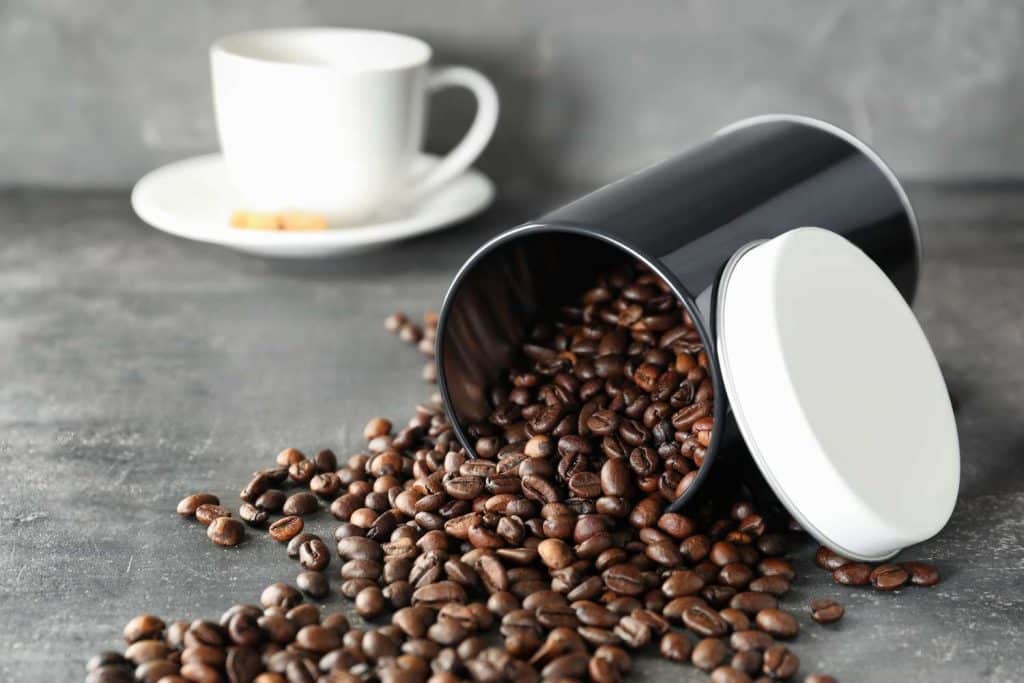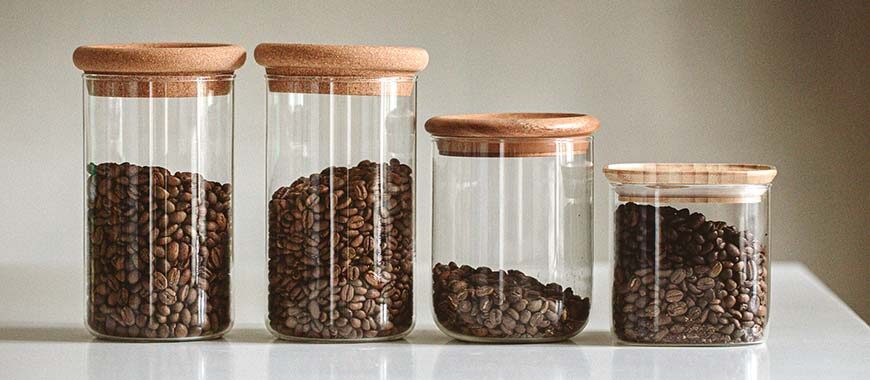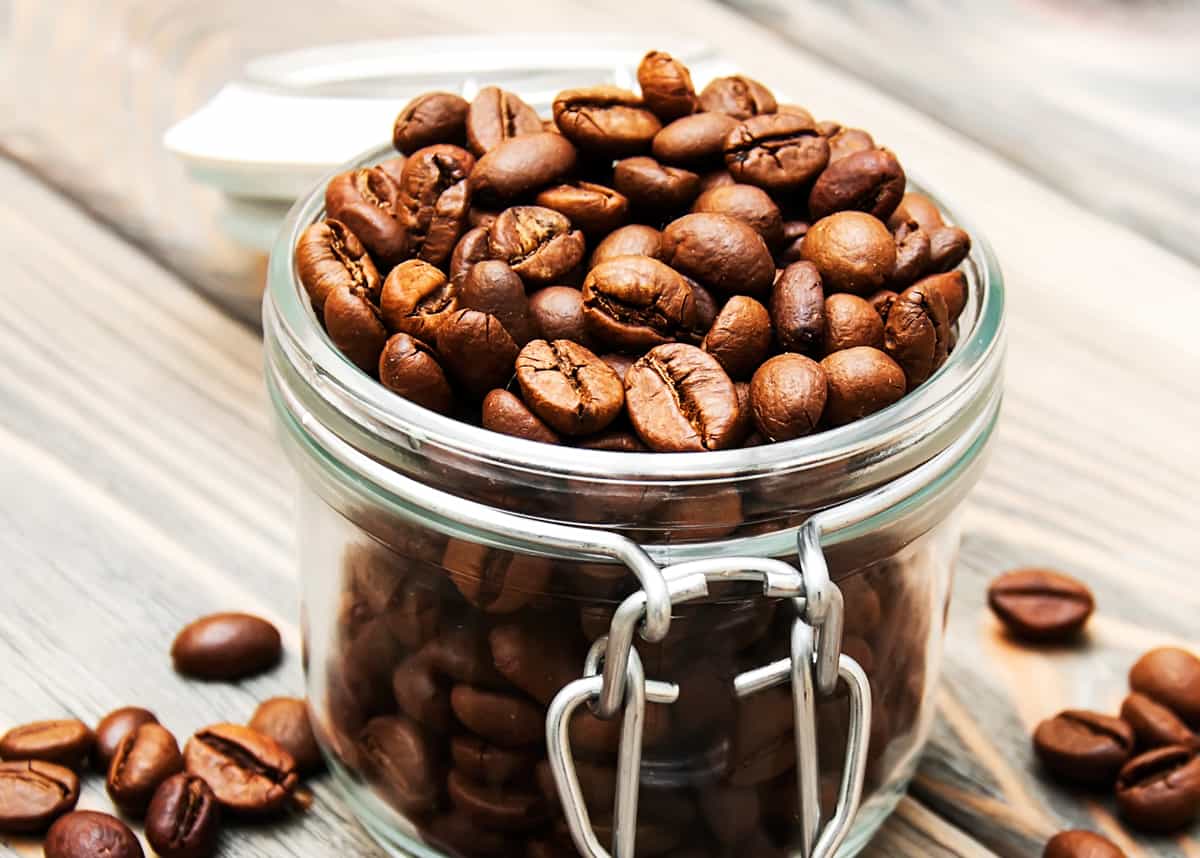Coffee aficionados know the importance of properly storing their beloved beans and ground coffee for maximum freshness and flavor. With so many variables at play, from air exposure to moisture levels, it can be a daunting task. But fear not, because we’re here to offer you some fantastic tips on how to store your coffee beans and ground coffee to keep them tasting their best for as long as possible. Say goodbye to stale cups of joe and hello to a fresh and delightful coffee experience every time you brew a cup.
Choosing the Right Container
Airtight Containers
When it comes to storing coffee beans and ground coffee, one of the most important factors to consider is keeping them fresh by protecting them from air exposure. Opting for airtight containers is crucial in achieving this. These containers are designed to create a seal that prevents air from infiltrating and oxidizing the coffee. Airtight containers can come in various materials such as glass, stainless steel, or plastic, but make sure to choose a container with a good quality, tight-fitting lid.
Opaque Containers
In addition to airtightness, it is also crucial to opt for opaque containers when storing coffee beans and ground coffee. Unlike transparent or clear containers, opaque ones prevent light from reaching the coffee. Direct exposure to light can lead to the deterioration of the coffee’s flavor and aroma, causing it to become stale over time. By choosing an opaque container, you are effectively protecting your coffee from harmful light and preserving its freshness.
Size of the Container
Consider the size of the container when choosing one for storing your coffee beans or ground coffee. It is important to find a container that can accommodate the amount of coffee you typically go through within a reasonable period of time. Remember that coffee is best when consumed within a few weeks of being roasted and ground, so it is advisable to store smaller quantities to ensure maximum freshness. This way, you can easily replenish your stock with fresh beans or ground coffee regularly.
Storage Location
Avoid Direct Sunlight
When it comes to storing coffee beans and ground coffee, it is crucial to keep them away from direct sunlight. Exposure to sunlight can degrade the quality of the coffee, as the heat and UV rays can accelerate the deterioration process. If left exposed to sunlight for an extended period, the coffee can become stale and lose its delicate flavors and aromas. Therefore, it is recommended to store your coffee in a shaded area or in a cabinet away from any windows or direct sources of light.
Avoid Heat Sources
Similar to direct sunlight, heat sources should also be avoided when determining the storage location for your coffee beans and ground coffee. Heat can expedite the process of oxidation and can lead to the deterioration of the coffee’s quality. It is essential to keep the beans or ground coffee away from appliances such as ovens, stoves, or even coffee machines that generate heat. Finding a cool and dry area, preferably with a stable temperature, will help in maintaining the freshness of your coffee.
Avoid Humidity
Humidity is another factor that can have a negative impact on the storage of coffee beans and ground coffee. Moisture in the air can cause the coffee to absorb it, resulting in a loss of flavor and aroma. Therefore, it is important to keep the coffee away from humid environments, such as near sinks, dishwashers, or open windows during rainy weather. Storing your coffee in a dry and controlled environment will help preserve its quality and ensure a better-tasting cup of coffee.
Avoiding Air Exposure
Seal your Container Well
Sealing your coffee container well is crucial to prevent air exposure and maintain the freshness of your beans or ground coffee. Make sure the lid is tightly secured and free from any gaps or openings that could allow air to enter. This can be easily achieved with containers that come with airtight seals or lids, offering maximum protection against air exposure. By properly sealing your container, you can extend the shelf life of your coffee and ensure that each cup you brew retains its rich flavors.
Use One-way Valve Bags
Opting for one-way valve bags can be another effective way to protect your coffee from air exposure. These specially designed bags feature a small valve that allows carbon dioxide, a natural byproduct of the coffee-roasting process, to escape without allowing oxygen in. This prevents air from entering the bag and causing the coffee to become stale. One-way valve bags are widely available and can provide an extra layer of protection, especially for large quantities of coffee that may need to be stored for an extended period.
Avoid Coffee Canisters
While coffee canisters may seem like a convenient storage option, they often fall short when it comes to keeping your coffee fresh. Coffee canisters are typically not airtight, allowing air to infiltrate and compromise the quality of your coffee. Additionally, the transparent design of many canisters exposes the coffee to light, which can accelerate the deterioration process. It is best to avoid coffee canisters and opt for airtight containers that offer superior protection against air exposure and light.
Temperature Control
Refrigeration and Freezing
When it comes to temperature control for storing coffee beans and ground coffee, refrigeration and freezing are options to consider. However, it is important to note that these methods have their limitations and should be used with caution.
Refrigeration can be beneficial for whole bean coffee if you have a large quantity that won’t be consumed within a few weeks. Placing the coffee beans in an airtight container and storing them in the refrigerator can help slow down the oxidation process and extend their freshness. However, it is crucial to allow the coffee to come to room temperature before grinding and brewing to prevent any condensation from affecting the flavor.
Freezing is more suitable for long-term storage, particularly for ground coffee. Freezing can significantly slow down the aging process and preserve the flavors. However, it is essential to freeze the coffee in an airtight container, dividing it into smaller portions to avoid repeatedly exposing the entire supply to air and moisture. Thawing and using only what is needed at a time is recommended to retain the quality of the coffee.
Room Temperature Storage
For most coffee enthusiasts, storing coffee at room temperature is the preferred method, as long as it is done correctly. Keeping the coffee in a cool and dry area, away from heat sources and direct sunlight, can help maintain its freshness. It is crucial to ensure that the container used for storage is airtight to prevent air exposure. By following these guidelines, coffee stored at room temperature can retain its flavors and aromas for at least a few weeks, allowing for a consistently enjoyable coffee experience.
Avoiding Odor Transfer
Store Away from Other Strong-Smelling Food
To prevent odor transfer and maintain the integrity of your coffee’s flavors and aromas, it is advisable to store it away from other strong-smelling foods. Coffee has a remarkable ability to absorb odors from its surroundings, and being exposed to strong scents can alter its taste and aroma. Avoid storing coffee near spices, onions, garlic, or any pungent foods that could potentially compromise its quality. By keeping coffee separate from these strong-smelling items, you can ensure that each cup of coffee you brew is free from unwanted flavors.
Use Coffee-Specific Containers
To further protect your coffee from odor transfer, consider using coffee-specific containers. These containers are designed with materials that resist absorbing odors, ensuring that your coffee remains uncontaminated. Coffee-specific containers can come in various styles and sizes to meet your storage needs. By investing in these containers, you can have peace of mind knowing that your coffee is protected from any potential odor issues.
Preventing Moisture
Use Desiccant
Moisture is one of the biggest enemies when it comes to storing coffee beans and ground coffee. To prevent moisture absorption, it can be helpful to use desiccant packets. Desiccant packets are small sachets of moisture-absorbing material, such as silica gel, which help maintain a dry environment within the container. By placing a desiccant packet in your coffee storage container, you can reduce the risk of moisture-related issues that can affect the flavor and quality of the coffee. Just make sure to use food-grade desiccant packets that are safe for storing consumables.
Avoid Moisture Absorbing Items
While desiccant packets help absorb moisture, it is equally important to avoid any items that can introduce moisture into the coffee storage environment. Items such as wet spoons, damp cloths, or even storing the coffee near a sink or a humid area can increase the chances of moisture absorption. Be mindful of the surroundings and ensure that everything in the storage area is dry. By keeping moisture at bay, you can protect your coffee from losing its freshness and flavor.
Don’t Store in the Fridge without Protection
While refrigeration can be useful for coffee storage, it is important to exercise caution when storing coffee in the refrigerator without proper protection. When the coffee is exposed directly to the refrigerator’s atmosphere, it can absorb moisture, affecting its flavor and quality. If you choose to store your coffee in the refrigerator, make sure to use an airtight container to prevent moisture from reaching the coffee. This extra layer of protection will help maintain the integrity of the coffee, ensuring that it tastes as delicious as possible.
Protecting from Light
Choose Dark-Colored Containers
To shield your coffee from the damaging effects of light, opting for dark-colored containers can be a useful solution. Dark-colored containers, such as dark brown or black, are effective in blocking out light and preventing any unnecessary exposure. The opaque nature of these containers helps preserve the coffee’s freshness by minimizing the impact of UV rays. By selecting a dark-colored container, you can add an extra layer of protection to your coffee storage routine.
Consider UV-Blocking Options
If dark-colored containers are not readily available, considering UV-blocking options can also offer protection against light exposure. Some containers are specifically designed to block UV rays, providing an ideal environment for storing coffee. These containers are typically made with UV-resistant materials that shield the coffee from harmful light. By exploring UV-blocking options, you can ensure that your coffee remains fresh and maintains its optimal taste and aroma.
Maintaining Freshness
Buy Whole Bean Coffee
One of the best ways to ensure the freshness of your coffee is to buy whole bean coffee and grind it just before brewing. Whole bean coffee retains its flavor and aroma much longer than pre-ground coffee. This is because grinding exposes more surface area to air, causing the coffee to lose its freshness more quickly. By purchasing whole bean coffee, you have greater control over the flavor profile and can savor the full potential of the coffee beans.
Grind Just Before Brewing
For those who prefer the convenience of ground coffee, grinding the beans just before brewing can help maintain maximum freshness. By grinding the coffee right before use, you minimize the time exposed to air and help preserve the flavors and aromas. Investing in a high-quality burr grinder is recommended for consistent and optimal results. This way, you can enjoy the freshest cup of coffee possible.
Avoid Freezing Ground Coffee
Ground Coffee Deterioration
While freezing can be an option for long-term storage of ground coffee, it is generally not recommended. Ground coffee is more susceptible to moisture and air exposure, and freezing can aggravate these issues. When frozen, the moisture in the coffee can crystallize, leading to degradation in flavor and aroma. Additionally, freezing and thawing the coffee repeatedly can introduce condensation, which further affects its quality. It is best to avoid freezing ground coffee unless absolutely necessary.
Exceptions to Freezing Rule
There are a few exceptions to the rule of avoiding freezing ground coffee. For instance, if you have a large quantity of ground coffee that you know you won’t be able to use within a reasonable time frame, freezing can be a viable option to prevent waste. In this case, ensure you divide the coffee into smaller airtight portions to minimize exposure to air and moisture. Additionally, if you have a special blend or single-origin coffee that you want to preserve for a more extended period, freezing can help maintain its unique characteristics. However, it is crucial to follow proper freezing and thawing techniques to minimize any negative effects on the coffee’s quality.
Monitoring Storage Time
Coffee Shelf Life
Coffee, both in whole bean and ground form, has a limited shelf life before it starts to lose its freshness and quality. On average, coffee can be considered fresh for about two to four weeks from the date of roasting. As the coffee ages, the flavors and aromas gradually diminish, resulting in a less vibrant cup. It is essential to be mindful of the coffee’s shelf life and consume it within this timeframe to experience the best flavors.
Label Coffee Bags
To effectively monitor and manage the storage time of your coffee, labeling the bags or containers can be a helpful practice. Including the date of purchase or the roasting date on the bag can serve as a reminder of how long the coffee has been in storage. This simple step can help you keep track of the freshness and ensure you use the oldest coffee first. By maintaining a system of labeling, you can enjoy your coffee at its peak and avoid any unnecessary waste.
In conclusion, proper storage of coffee beans and ground coffee is crucial to maintain freshness and ensure a delightful cup of coffee every time. By choosing the right container, storing them in an optimal location, avoiding air exposure, controlling temperature, preventing odor transfer and moisture, protecting from light, and monitoring storage time, you can enhance and prolong the flavors and aromas of your coffee. So take the time to implement these tips and make the most of each brew, savoring every sip of your favorite beverage.






:max_bytes(150000):strip_icc()/store-coffee-pantry-vs-freezer-01-9c4c1f26e6c646a8ad482038af0e3719.jpg)


































